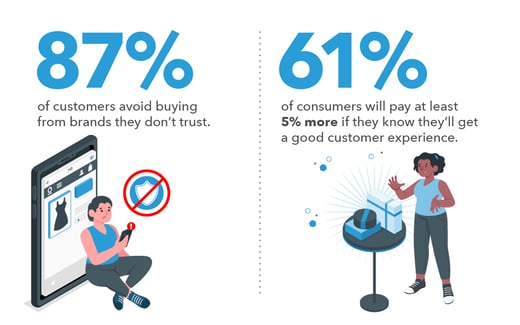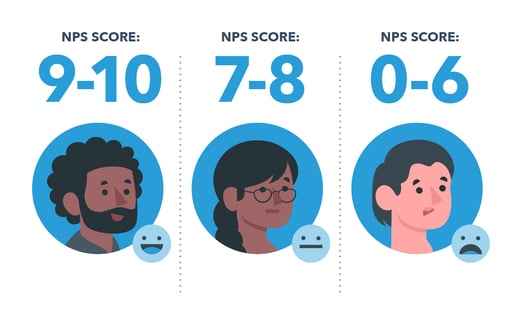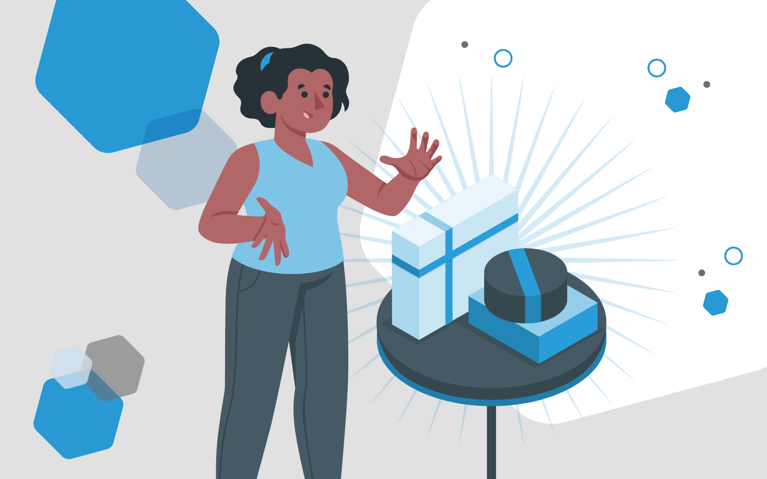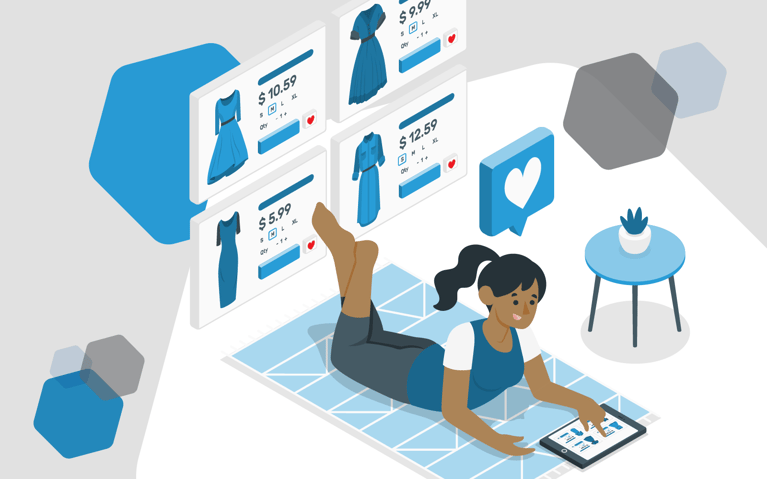From initial brand awareness to the post-purchase phase, consumers undergo a series of interactions. These touchpoints collectively shape the customer experience—a pivotal factor in business growth and innovation. Mapping the customer journey and identifying strengths and weaknesses has become indispensable for brands. Without insights into the consumer experience, adapting, evolving and fostering engagement becomes challenging, hindering the ability to build trust and drive loyalty.
Today’s consumers crave a connection to brands. A survey found that 87% of customers actively avoid buying from brands they don’t trust. Moreover, brands earn trust through the customer experience – and 61% of consumers will pay at least 5% more if they know they’ll get a good one.
The key to creating an exceptional journey is a deep understanding of what your customers experience and what they want and need. That requires gathering and analyzing information and data. However, it’s not always easy to know where to begin. This article will cover how to measure the end-to-end customer experience and what KPIs to use.
What is the customer experience?
The customer experience (CX) encompasses every interaction with a brand, from initial awareness to post-purchase engagement. It reflects the sum total of impressions, emotions and perceptions formed throughout this journey. A positive customer experience is crucial for business success, influencing customer satisfaction, loyalty and advocacy. Businesses often employ personalized interactions, streamlined processes and responsive customer support to enhance the customer experience. Understanding and optimizing this journey is essential for adapting to customer needs, fostering long-term relationships and staying competitive in today's dynamic market.
The phases customer journey
The customer journey typically consists of several phases:
- Awareness: Customers become aware of a brand or product through marketing efforts, advertising or word of mouth. Word of mouth includes social media, which has become a place of discovery for many consumers.
- Consideration: Customers actively explore and consider the offerings, comparing them with alternatives and evaluating their suitability.
- Decision: The customer makes a purchase decision, selecting a specific product from the available options.
- Purchase: The customer completes the transaction, making the actual purchase.
- Post-Purchase: During the post-purchase phase, fulfillment begins and customers assess their experience, including shipping, delivery and unboxing. Businesses aim to provide ongoing support, engagement and satisfaction after the purchase is complete.
- Retention: Brands focus on retaining customers, encouraging repeat purchases, loyalty and potentially advocacy.
- Advocacy: Delighted customers become advocates, recommending the brand to others and contributing to word-of-mouth marketing and brand growth.

The phases of the customer journey may vary slightly depending on the industry, product type or business model, but they generally represent the sequential stages in a customer's interaction with a brand. Each is a potential area to identify touchpoints and areas of customer satisfaction to measure and the KPIs you can use.
Measuring the customer experience
Measuring the customer experience provides valuable insights into customer satisfaction, identifies areas for improvement and guides strategic decision-making. It helps businesses understand their strengths and weaknesses while identifying improvement areas that enhance customer loyalty, ultimately contributing to sustained growth and success.
While there are many areas for measuring the customer experience, it helps to start with a few powerful KPIs that span the end-to-end journey. This means pre-purchase, purchase and post-purchase. As you learn to interpret and make strategic adjustments, you can add more that best suits your customers’ journeys and common touchpoints.
To measure, you’ll want to take a few steps:
- Set your CX goals
- Define your KPIs
- Determine a time frame
- Schedule measurements throughout the lifecycle and create benchmarks
- Use the right data and analytics tools
- Present results in a clear, understandable and engaging way
Here are the KPIs brands should be measuring:
Marketing campaign effectiveness
There are several ways to measure marketing campaign effectiveness. However, return on investment (ROI) helps show how much you make from a specific action. For example, attributing how many sales resulted from a specific marketing campaign initiative. The effectiveness of marketing campaigns fits within the customer experience because it should reflect and answer your customers' needs. It should also take a tone that not only fits your brand voice but engages your customers.
Direct traffic and pages per visit
Direct traffic and pages per visit are crucial metrics in understanding and enhancing the customer experience. Direct traffic reflects the visitors who intentionally navigate your site, indicating a strong brand presence and customer interest. High direct traffic also suggests effective brand awareness, showcasing the success of marketing efforts and customer loyalty.
The higher the number of pages per visit indicates that visitors find the content engaging and relevant, contributing to a positive experience. It signifies that customers are exploring various sections of your site, possibly discovering products or information, creating a more comprehensive customer journey.
Understanding these metrics helps you optimize navigation and identify the most compelling content. It allows you to further tailor content to user preference. It creates conversion opportunities and lets you generate pages with information and content that increase customer satisfaction.
Conversion rate
When your conversion rate is low, it’s a sign that the experience may not be optimal. When brands focus on improving the experience, it can boost conversion rates at a variety of touchpoints. For example, brands can personalize, ensure a user-friendly website, install responsive customer support, offer transparent information, offer incentives, streamline the checkout process or develop compelling calls-to-action.
Cart abandonment rate
Carts are abandoned for many reasons. However, some reasons can be fixed by developing a better experience. Is it because you don’t have multiple payment options, or is there a need to access support during checkout? Try different ways of optimizing your customer experience to see if you can lower your cart abandonment rate.
Perfect order rate
Shoppers expect free, fast and seamless shipping experiences – and a perfect order rate helps let brands know if they’re meeting those needs. A perfect order rate takes the total amount of orders in a given timeframe, adds up the number of order errors and uses a simple formula to calculate the percentage of orders that are “perfect.” The higher your percentage, the better your fulfillment process.
Customer retention
Measure how well your company retains customers to gauge satisfaction. A higher retention rate signals happy customers, while a low rate may indicate issues with the of your customer experience. Trace retention rates over time or specific customer journey points. Focusing on improving experiences during high-churn phases enhances overall satisfaction, as retaining customers is more cost-effective than acquiring new ones.
Customer churn rate
Customer churn is the opposite of customer retention. It looks at how many customers stop purchasing your products. Often, you can trace the average churn rate throughout the customer journey to find weak points and where shoppers “churn.” It’s critical to address any issues customers have with your products or services. As you improve those areas, the experience will improve, resulting in a lower churn rate.
Average response and resolution times
According to a recent customer experience report, 95% of consumers say customer service impacts their brand loyalty, naming easy access, self-service and professional agents as important factors. To create loyal customers who trust your brand, you must provide response and resolution times that meet or exceed your customers’ expectations.
Measuring response and resolution times can be done in several ways, from the broad scope to individual agents. Set benchmarks, implement training and take the steps necessary to lower the time it takes to respond to inquiries or resolve a problem.
Net promoter score (NPS)
The Net Promoter Score (NPS) is a metric used to measure customer loyalty and satisfaction based on a single question: "How likely is it that you would recommend our company/product/service to a friend or colleague?" Respondents typically provide a rating on a scale from 0 to10. The NPS categorizes respondents into three groups based on their rating:
The NPS categorizes respondents into three groups based on their rating:
- Promoters (Scores 9-10): Customers who are highly satisfied and likely to recommend the product or service. They contribute positively to business growth.
- Passives (Scores 7-8): Customers who are satisfied but not enthusiastic. They may be vulnerable to competitive offerings and are less likely to actively promote the brand.
- Detractors (Scores 0-6): Customers who are dissatisfied and may even spread negative feedback. Detractors pose a risk to a company's reputation and growth.
NPS is calculated by subtracting the percentage of Detractors from the percentage of Promoters. The resulting score can range from -100 to +100. NPS measures the customer experience through:
NPS measures the customer experience through:
Customer loyalty indicator: NPS serves as a key indicator of customer loyalty. Higher NPS values suggest a positive customer experience, while lower values indicate areas for improvement.
- Focus on promoters: The emphasis is on cultivating Promoters who actively advocate for the brand. Their positive word-of-mouth can attract new customers and contribute to business growth.
- Continuous improvement: Regularly measuring NPS allows businesses to track changes in customer sentiment over time. It provides actionable insights for continuous improvement and adjustment of strategies to enhance the overall customer experience
- Benchmarking: NPS facilitates benchmarking against industry standards and competitors, helping businesses assess their performance in delivering a superior customer experience
NPS is a widely used and valuable tool for businesses seeking to understand, evaluate, and improve customer loyalty and overall satisfaction. It offers a simple yet powerful way to measure the customer experience and identify areas for strategic enhancement.
Customer satisfaction
The Customer Satisfaction Score (CSAT) is a metric used to quantify a customer's satisfaction with a product, service, or overall experience. It typically involves a survey where customers rate their satisfaction on a numerical scale. CSAT directly impacts the customer experience by quantitatively measuring how well a business meets customer expectations. A high CSAT score signifies content and satisfied customers, indicating that the business is delivering on its promises and meeting customer needs. On the opposite end, a low CSAT score suggests dissatisfaction and identifies areas for improvement.
Brands utilize CSAT to identify specific touchpoints or aspects of the customer journey that may require attention and enhancement. By addressing the areas highlighted by CSAT feedback, businesses can proactively improve the overall customer experience. Regular monitoring of CSAT scores enables brands to track changes over time, align strategies with customer expectations and foster long-term customer loyalty. Ultimately, CSAT is a valuable tool for companies committed to delivering exceptional customer experiences and continuously refining their products or services based on customer feedback.
Optimize your customer experience with Cart.com
The customer experience is imperative: 88% of buyers say experience matters as much as a company's products or services. Measuring the customer experience with KPIs offers businesses valuable insights into satisfaction levels. It allows for data-driven adjustments, ensures alignment with customer expectations and contributes to long-term success and growth. If you’re looking for a solution that spans the customer experience and helps you track KPIs in a more integrated way, contact the team at Cart.com today.
Subscribe to our emails for the latest industry insights!
By entering your email, you agree to receive marketing emails from Cart.com






